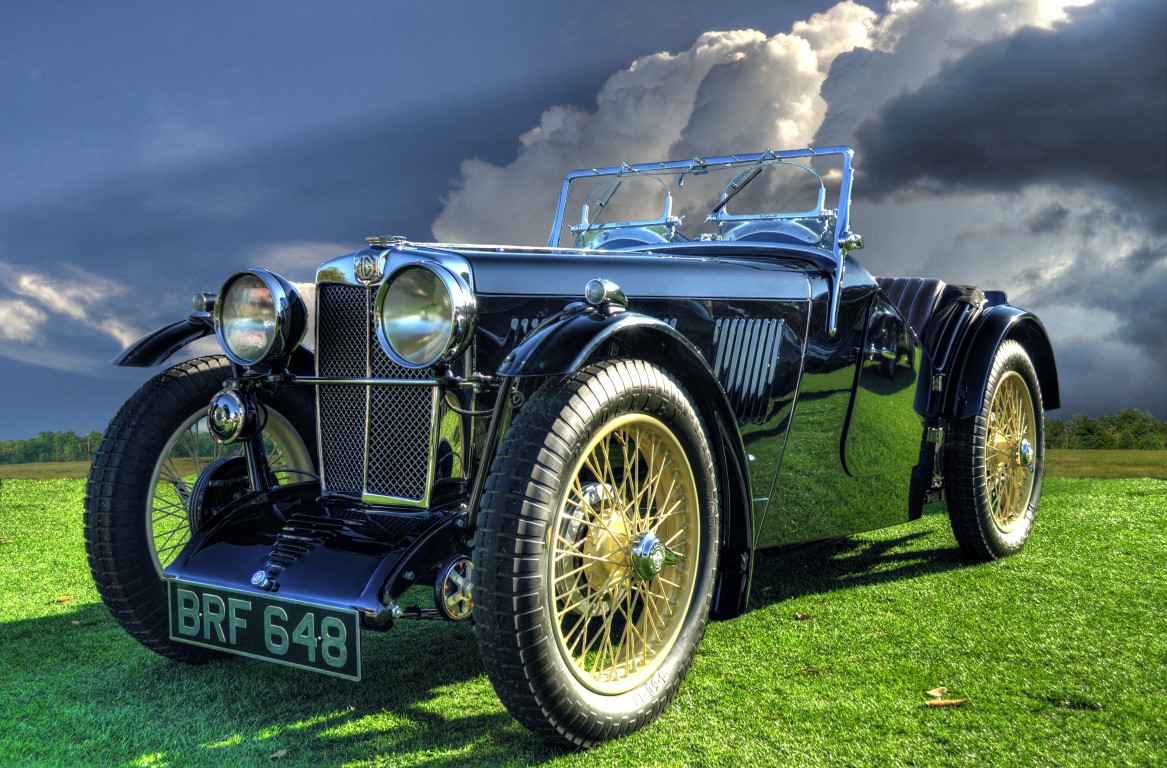
In the 1920’s it was common practice to add a bit of tuning and dashing coachwork to an otherwise staid sedan and create a “sports car”. In 1922, Cecil Kimber began his experimenting, melding tuning and new coachwork to a 1.8 liter Oxford Engine, creating the MG Super Sports. Backed by Morris reliability and service, this little car was a success. By the 1930’s, MG’s evolved into the classic slab-tanked, two-seat roadster which remained popular for many years to come. The J2 shown is a 1932 model. The J2 features an 850 CC overhead cam engine, producing 36 horsepower and propelling the car up to 80 miles per hour. 2.083 J2s were produced along with a limited number of supercharged J3 and J4 (four passenger) variants. The success of the J types as sports and race cars helped solidify MG’s early reputation.
The J Type MG was the predecessor to the P Type and then the well known and loved T series cars. So, you could very easily justify the J2 the “Grandfather of the British Sports Car Movement.”
You may purchase a print in our dElegance 2011 online gallery.
The Vintage Automobile Blog Index


